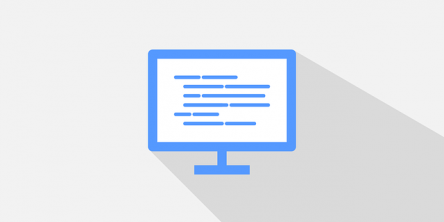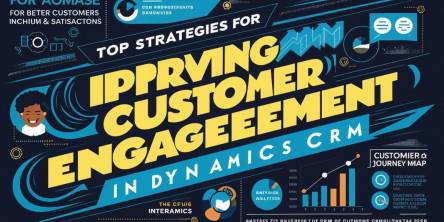Top Ways in Which EHR Systems Enable Better Patient Care

Electronic Health Records system offers benefits that have enabled an industry as tricky as healthcare. The software allows for medical professionals and other professionals across the ecosystem to quickly input as well as access information about a patient. Since this data is recorded and stored in centralized databases, it also becomes easier to maintain extensive records about the patients’ medical history. Such comprehensive data then goes a long way in ensuring they receive relevantly and substantially improved medical care that is based on their unique history, requirements, allergies, and more. That alone contributes significantly to ensuring patients receive top-notch care, even if they switch to a different medical facility.
Given the extensive nature of data collected and stored for patients, the value to be gained from EHR systems is both massive as well as invaluable. And even in the face of inadequacies, EHR systems have quickly evolved to address the healthcare industry and patients’ requirements — often by leveraging the latest technologies available in the market. As a result, its abilities and contributions have grown immensely as well. For example, in case of an emergency, the modern crop of EHR systems can automatically fill in the medical professional about all the relevant data to help them better tend to the patient in front of them. These are, of course, only some of the many, many benefits EHR systems have to offer. Let us take a look at some of the other compelling ways in which they help improve patient care.
- Better engagement: EHR systems today come equipped with a plethora of functionality to automate some essential functions in a healthcare business. Take appointment confirmation, for example, the systems now, driven by advanced technologies like artificial intelligence, can understand primary responses over text messages. This ability is highly valuable in ensuring that patients stay engaged as well as informed about their scheduled appointments or even the availability of dates, lest they feel the need for one.
- Technology-driven appointment scheduling process: Appointment scheduling isn’t nearly as simple as some people may make them out to be. It needs extensive knowledge of the facility’s operations, doctors’ availability, and more. Thankfully, EHR systems can now help with that via smart appointment scheduling. Besides the essential functions, it can also help fill up available appointment slots by, say, informing the next patient in the queue in case another patient cancels.
- Cut down the scope of errors in medical care: Of course, there is always the scope for error in any given thing. Unfortunately, the risk associated with the error in healthcare is rather grave. In the US alone, up to 98,000 deaths are attributed to medical errors every year. The scope for some of these errors can be reduced with EHR systems. How? Because of the extensive nature of data for every patient stored within them and also because they help reduce the scope of error within the data and the risk of loss.
- Enhanced care experience: EHR systems are highly conducive to simplified and accelerated processes across the entire healthcare facility. Case in point: Intake and admission processes. When done manually, such methods can seem nearly endless since they generally involve endless back and forth as relevant information about patients, their medical history, insurance, and more are collected in the individual hospital’s system. However, with EHR, this process is simplified for the first time and unnecessary after that — even if you switch to a different facility.
It is clear to see that modern-day EHR systems have much to offer: Starting from substantially better processes to top-notch patient care experiences. Any healthcare company that takes a custom EHR software development will also stand to gain immensely in the context of the business’ growth and bottom line.
Similar Articles
The retail sector has been subject to continuous advancement thanks to the changing needs and demands of consumers. And it is also a well-known fact that shopping experiences have and must mirror technological and societal advancements. Today, customer expectations are unequaled, demanding consistent and customized experiences across different platforms.
Virtual Hard Disk (VHD) files play a role as they store all the data for a virtual machine. If these files get damaged or mistakenly deleted it can have repercussions, impacting not data integrity but also operational continuity.
Corporate transparency is essential in building stakeholder trust and credibility in today's evolving business environment. As businesses grow and adapt to changing regulations, ensuring adherence to rules and maintaining records has become increasingly intricate.
Among the solutions developed over the past few decades, Salesforce Financial Services Cloud (FSC) has emerged as the definitive choice for gaining flexibility, visibility, and long-lasting, inclusive growth in the financial sector.
Open source software (OSS) is distributed with its source code, which means it can be distributed, modified, and used freely with the original rights. Most users never see the source code, a critical part of the software.
It's one of the keystones, basic but key in the successful highly competitive modern business environment, where the connection with the customer is a must.
The speed of progress in the modern business landscape is quite relentless. For small-scale companies, this implies that keeping up with this progress is not simply gainful but fundamentally significant for their survival. And what does success in such an environment demand?
The finance sector needs to battle many difficulties in the modern and quick-moving digital landscape. Be it exploring the unpredictable snare of official guidelines or overseeing tremendous volumes of data - - financial establishments are feeling the pressure to succeed. This demanding environment, in turn, often leads to exhausted teams, costly manual errors, and inefficiencies that can be chalked up to repetitive tasks
The manufacturing industry, vital to the world economy, is at a pivotal intersection. I mean that, yet again, changes are afoot in the sector, this time driven by digital transformation as it represents a profound change in the very essence of how manufacturers operate, think, and drive innovation.









